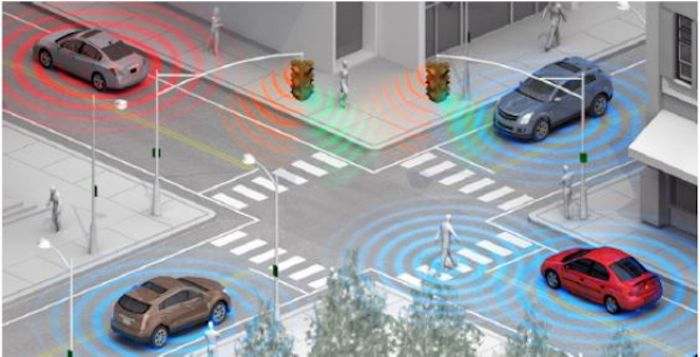The City of Austin is the first municipality in Texas to enter the US Department of Transportation’s (USDOT) SPaT (Signal Phasing and Timing) Challenge that is being run through the National Operations Center of Excellence (NOCoE).
The SPaT Challenge is an initiative of the V2I (Vehicle to Infrastructure) Deployment Coalition, led by the American Association of State Highway Transportation Officials (AASHTO), the Institute of Transportation Engineers (ITE) and ITS America.
As a major demonstration of the practical deployment of connected vehicle applications, the program challenges state and local public sector transportation infrastructure owners and operators to cooperate to achieve deployment of DSRC (dedicated short-range communications) infrastructure with SPaT broadcasts in at least one corridor or network (approximately 20 signalized intersections) in each of the USA’s 50 states by January 2020. SPaT broadcasts are expected to be accompanied by MAP and RTCM (Radio Technical Commission for Maritime Services) broadcasts.
So far across the USA, 26 states have committed to respond to the SPaT Challenge, with 216 traffic signals currently operating with the technology and a further 2,121 planned for operation by 2020.
The City of Austin has completed one deployment of DSRC-based V2I technology at five intersections, with two more projects planned for completion in 2019. The technology will allow connected cars to communicate in real time with the traffic signal controller, increasing pedestrian and vehicle safety as part of the operations of the signalized intersection. The small roadside unit (RSU) test devices can broadcast industry standard basic safety messages in the immediate vicinity of the intersection to surrounding vehicles equipped with onboard units (OBUs).
The Basic Safety Messages indicate vehicle position, motion, brake system status and size, and provide vehicles with SPaT information as well as MAP data, which is used to illustrate intersection geometry using high-resolution formatting. This type of information will help future connected traffic signals and equipped vehicles communicate about pedestrian or bicyclist presence in the intersection, improve vehicle performance, and provide engineers with traffic data that can be used to improve safety and operations.
The City of Austin was chosen by USDOT as the deployment site for the V2I portion of the federal Connected Vehicle Reference Implementation Architecture, commonly known as the V2I Hub. Successful implementation of this guiding architecture was the chief enabler to getting Austin and Texas on the SPaT map.
Participation in the SPaT Challenge will form part of Austin Transportation’s Smart Mobility Program, which involves deploying new technologies to help move people and goods through the city in faster, safer, cleaner, more affordable and more equitable ways. Current initiatives in the program include: the creation of a Smart Mobility Roadmap with Capital Metro; and a Smart Parking Meters Demonstration where Austin Transportation has partnered with Municipal Parking Services to deploy six smart parking meters in two locations to test the technology and collect data about parking turnover rates and revenue.





